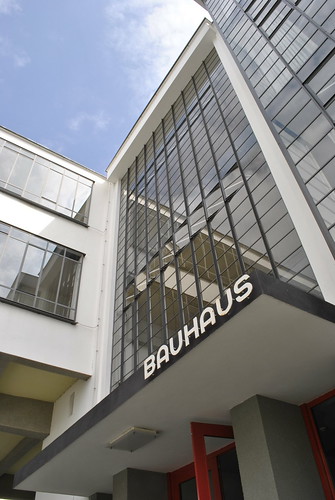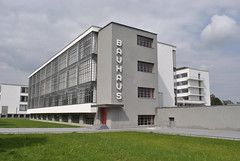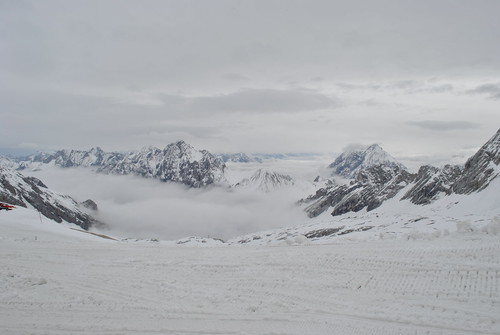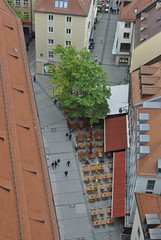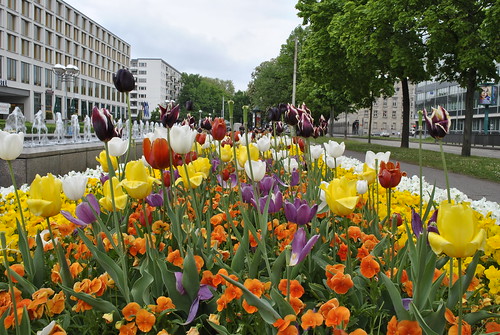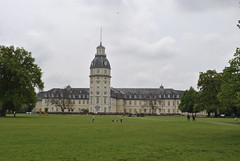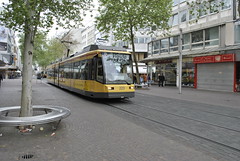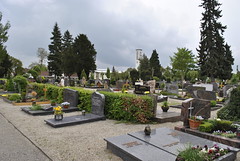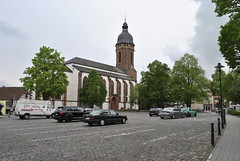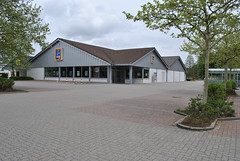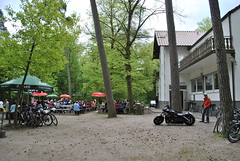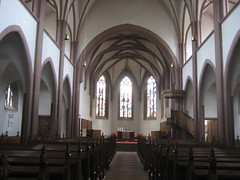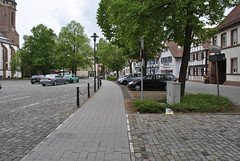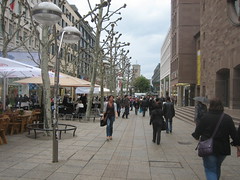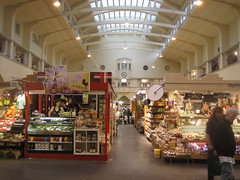On Saturday, May 9, my last day in Germany, I traveled from Berlin to Dessau to see the Bauhaus. I did not preplanned this side trip, but had one day left on my DB rail pass and felt I had seen enough of Berlin. The Bauhaus is located in a quiet, mostly residential area a few blocks west of the train station. The more commercial city center of Dessau is located to the east of the station. The approach to the Bauhaus is along Bauhaustraße lined with several sleek, contemporary buildings, for which I found an interesting description from another visitor here. I assume the placement of these buildings were intentional, a preparation of sorts for reaching the Bauhaus itself, while presenting an intriguing first impression of the town.
The Bauhaus itself was of course neat to see and explore its many areas. There were several other Bauhaus buildings in Dessau – a few blocks north were the Masters Houses, built around 1930, to provide dwellings for Walter Gropius and other Bauhaus masters/teachers, including painter Wassily Kandinsky. The Gropius House was singular while the other six were paired into duplexes. The Gropius House and one of the dwellings in the house adjacent were destroyed in air raids in 1945. A more traditional home was built over the remaining Gropius foundation, while the other dwelling was never rebuilt. Those remaining have undergone renovations to restore the houses to their original condition. For a small entrance fee, it was fun looking through the different houses.
I continued my walk further northward, along the edge of town to see the Bahaus-style Kornhaus Restaurant on the banks of the Elbe River. The walk back toward the center of town was through a less dense, mostly residential neighborhood. Before leaving Dessau I took a ride on the minimal tram system. I was surprised to find rail transit in such a small city – even in Germany, but the service headways were quite long (at least for Saturday afternoon). On my ride I saw much of the more commercial area of Dessau east of the train station. Further out it seemed to get more sparse and less attractive. Afterwards I stopped in the Rathaus Center – a shopping mall in the heart of the modernized city center – to grab a few pretzels for a snack. The mall was quite busy with people compared to relatively light foot traffic outside. I’m not sure what to make of the “newer” part of Dessau, but the seeing the Bauhaus was definitely a good way to spend my last day in Germany.
On the way to and from Dessau I had to switch trains in Lutherstadt Wittenberg, the town where Martin Luther nailed his 95 theses on the door of the Catholic church in 1517. The station was not near the Marktplatz so did not see the church, but did venture through a few blocks of a different area in the time I had to wait. On the way back to Berlin, I accidentally got off one station too soon, which was actually closer to the old center of town. At first I was a bit concerned, but ended up having plenty of time as my connecting train was running late. Simply by chance, a bicycle race was passing by right as I exited the train. A camera car followed the swarm of cyclists so it was evidently something significant enough to be on TV. To get back to the next station I took a nice walking path that followed the tracks most of the way. Small cottages with plentiful gardens lined the path so it was a nice walk. The small, unintended visits to small towns were some of my most memorable.
See all my photos of Dessau and the Bauhaus here.
